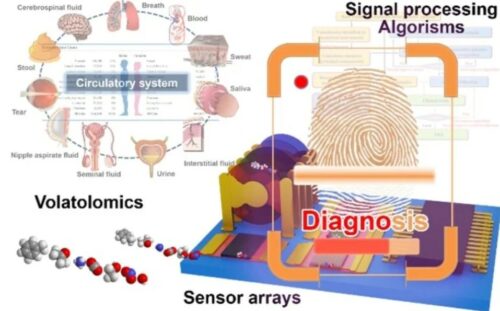By examining biological emissions, this new robotic technology can locate volatile organic molecules linked to diseases.

What your body actually detects when you smell a perfume, experience the aroma of flowers or spices, or breathe in polluted air are volatile organic molecules (VOCs). VOCs are also unintentionally released during all biological activities, including those involved in disease. This implies that each disease has a unique VOC “signature” or “fingerprint.”
A revolution in medicine’s ability to diagnose and ultimately treat illnesses could result if researchers and doctors are able to classify the VOC fingerprint of various ailments and engineers are able to create equipment that could quickly identify such fingerprints. The primary principle of the relatively new discipline of volatolomics is the analysis of the whole collection of VOCs that an individual exhales in their breath, emits from their skin, sweat, or tears, or, in fact, emits through any other biological mechanism.
“But the field is so young, and draws in researchers from many fields such as chemistry, electrical engineering, computer science, materials science, and of course clinicians who deal with patients every day, who are unused to speaking to each other, who typically employ different methodologies, and who often do not even use the same terms,” said Yun Qian, a co-author of the review and researcher with the Cancer Center of Zhejiang University.
“So we brought a bunch of us from these various disciplines together to write a comprehensive review paper that we hope will work as a bridge connecting each other’s expertise in this sprawling field.” The review offers commentary on the current state of the technologies used in volatolomics analysis, particularly sophisticated “electronic nose” (E-nose) and “photonic nose” (P-nose) VOC detection equipment.
The reviewers hope to both give doctors a thorough understanding of such cutting-edge detection technologies and to give all volatolomics researchers an overview of where the main research gaps lie, thereby enabling a narrowing of the still significant gap between lab bench and commercial deployment. They do this by outlining the current situation, what challenges developers of these “robot noses” face, and providing future perspectives.
Click here to access the research.













